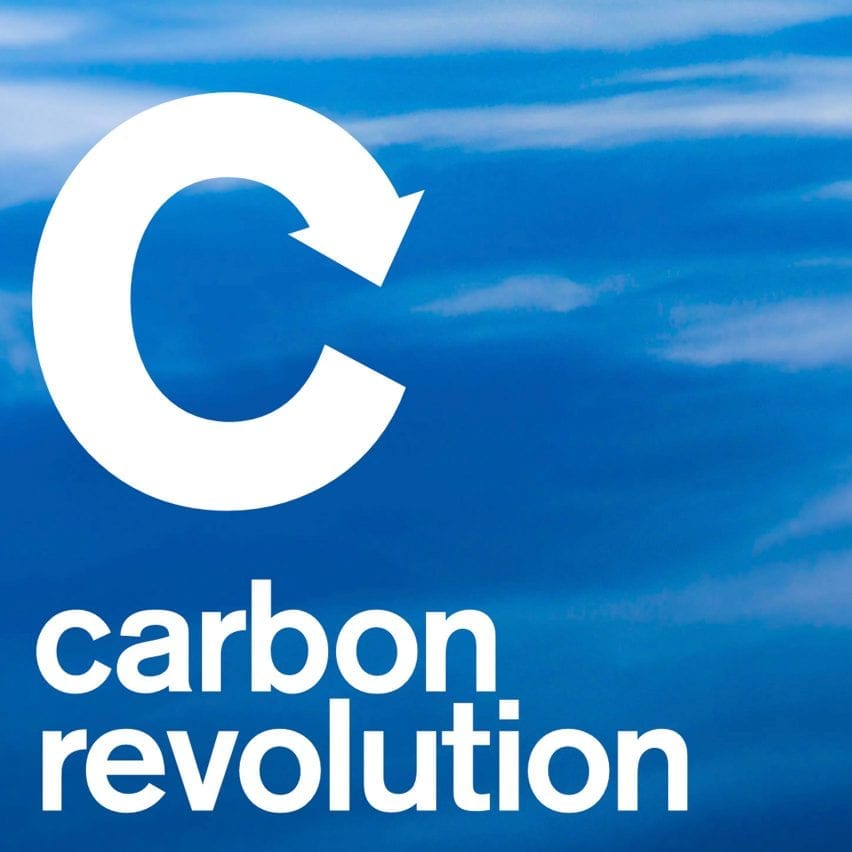
"The carbon revolution treats the miracle material as the saviour of our civilisation rather than its nemesis"
A carbon revolution is underway. In a major new series starting today, Dezeen explores how this incredible material could be removed from the atmosphere and put to use on earth, writes founder and editor-in-chief Marcus Fairs.
Carbon is a miracle material. The only problem is that too much of it is in the wrong place.
But entrepreneurs, scientists, writers, designers and architects are beginning to talk about a carbon revolution that views the element as the saviour of our civilisation, rather than its nemesis.
Carbon deservedly gets a bad press for its role in global warming. Carbon dioxide, a gas formed of carbon and oxygen, is one of several greenhouse gases that are causing climate change, but it is by far the biggest single contributor.
Carbon is also present in methane, a far more potent greenhouse gas which, fortunately, is far less abundant.
Carbon is the building block of all living things.
Yet carbon is also an incredibly useful and important element. Life cannot exist without it: it is the building block of all living things and makes up half the dry mass of every plant and around a fifth of the mass of all animals, including humans.
It is the fourth most abundant element in the universe and easily the most versatile. Carbon atoms can be arranged to form diamonds, graphite, carbon fibre and graphene as well as weird and wonderful nano-materials such as buckminsterfullerene.
It can combine with other elements to create an almost infinite number of compounds such as carbohydrates (including sugars), hydrocarbons (from which most fuels and plastics are made) and carbonates (including limestone). It can be turned into carbon fibre and is an essential ingredient in steel (which is an alloy of iron and carbon).
Carbon is also of course the main constituent of wood and all biomass.
A breathtaking range of new carbon-based materials are being developed around the world.
In addition, a breathtaking range of new carbon-based materials are being developed around the world including food, plastic, fuel and cement – materials whose current production methods are responsible for much of the environmental destruction of our age.
Meanwhile, companies such as Climeworks are developing commercially viable ways of removing large amounts of carbon from the atmosphere. This is currently expensive but if the price of atmospheric carbon falls low enough, it could provide an incredible net-zero raw material that could eventually replace fossil fuels while reducing the risk of runaway climate change.
To produce this carbon revolution series, we've spoken to leaders around the world who are working in cutting-edge fields such as carbon capture, carbon utilisation, carbon mineralisation, carbon sequestration and decarbonisation. Our research has opened up a whole new lexicon as well as a breathtaking range of activity and ingenuity.
What if carbon represents an opportunity, rather than a threat?
What unites these figures is their quiet determination to help prevent climate change and their optimism that it can be achieved.
Global warming is such an existential threat that it's easy to succumb to fatalism. Yet ways of addressing it seem so complicated and difficult that it often seems simpler to do nothing.
But what if we're all looking at the problem through the wrong end of the telescope? What if carbon represents an opportunity, rather than a threat?
In a series of articles we're publishing over the coming days, we hope to swing the telescope around, transforming our readers' understanding of this amazing material and helping them play a part in the carbon revolution.

Carbon revolution
This article is part of Dezeen's carbon revolution series, which explores how this miracle material could be removed from the atmosphere and put to use on earth. Read all the content at: www.dezeen.com/carbon.
The sky photograph used in the carbon revolution graphic is by Taylor van Riper via Unsplash.